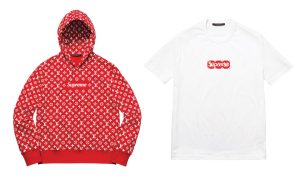
Luxury has most often remained synonymous with quality. The Art of Storytelling for most of the brands remains built on their country of origin, their classic know-how, the exclusive and fine materials they use, exceptional craftsmanship, and other remaining characteristics we study in our books. This defines the reason why luxury brands are expensive and demand the premium price they charge for.
However, in today’s time, that no longer suffices as a set of strong reasons to justify the brand’s high price, given to the fact that few brands produce in their home countries and the supply chain of such brands remains a mystery to many.
Things have changed in the last 15 years. We have seen the globalization of family-owned brands, diversification of product portfolios, new market penetrations, and yes the boom of the internet. What we eagerly wait for now is Blockchain to show us what it’s got in store for luxury.
Through the eyes of a millennial and keeping up with the GenZ, here are a few factors that would define a luxury brand’s price—worth a king’s ransom in today’s digital times.
Luxury Hype driven by cultural values
Yes, this might be against the standard rules of “Luxury Marketing” but in today’s digital age—if something’s hyped, it doesn’t matter what material it’s made out of if you want it.
Let us drive our attention to Supreme’s box logo tees. Despite retailing for less insane prices, today they resell for up to $900.
What defines the price here—“It’s not the intrinsic value but it’s the cultural value created around it. However, that only exists for a few products at a time.”
To create hype, you need to limit accessibility. This is one of the fundamentals of luxury—Scarcity.
Supreme does it by creating far less product than its customers want. One has to hustle to get their hands on the handful of logo drops each season.
Luxury that remains indifferent to fashion
The season may come and go but luxury needs remain relevant forever.
The multiple fashion cycles which give rise to trends that later disappear in a matter of months do not encourage and value craftsmanship.
In today’s consumption-driven market along with the rising awareness of its implications on both human and environmental level, consumers now question why spend their time and money on something that’s going to be out of the ark after a couple of seasons?
When wanting a piece of an absolute favourite designer at one of the higher-end houses, it might truly be worth it to buy a one-off piece from a coveted collection, since “drops are in new black”!
However if one wishes to buy a beautiful leather bag, the consumers would be willing to go for something distinctive and more personalised which will remain timeless.
The luxury here demands a higher price for its individuality, uniqueness, and relevance that it will hold even many years later. It’s so much more than the concept of a mere logo.
Let’s talk about the legendary—Jun Takahashi’s Undercover as a brand that brings a luxury sensibility to streetwear, rather than the other way around. The brand makes T-shirts, but great T-shirts which are like artworks that bring out the wit and rebellion of the Japanese deconstructionist Takahashi.
Luxury which understands Emotions Intelligently
The emotional value of a brand or product-brand combination serves a particularly strong impact on the willingness to pay in the luxury goods industry. A case that is strongly witnessed in Asian markets.
Luxury consumers today are leaning towards “emotional luxury” which is derived from feeling recognized, special, and known. However, studies reveal that very few customers say they feel special and recognized by a brand.
The brands that will prioritize building a seamless relationship by integrating brand experiences with emotional intelligence especially for consumers who are new entrants to luxury are sure to win its consumers’ hearts.
Luxury brands also continue to capitalize on the perceived value that their consumers hold for brands, which is very high. This perceived value is linked to the emotional value drivers that come in addition to the functional ones. From increasing self-esteem to providing a sense of belonging to a certain section of society, today’s Genz and millennials are more emotionally sensitive.
Luxury with The Resonance Factor
Innovation and creativity are the driving factors for luxury brands, which allows them to command the prices they wish for. Adding to that, in today’s scenario the brand’s price in the saturated luxury market places will also be defined for “what they truly stand for”. These underlying brand messages are the ones that help customers create and reinforce their identity.
Brands will need to creatively interact with their consumer to contribute to an experience which will help them reinforce their brand narrative to their audience.
This will create a positive resonance in the minds of the customers helping them associate with the brand strongly and making it a part of their story.
Luxury brands’ expensive pricing most often reflects their core propositions of quality, heritage, and exclusivity. However, with changing times, the brands will also need to consider their pricing strategy and respond to millennial consumers in a more transparent manner so that trust and authenticity are ensured amongst its consumers.
